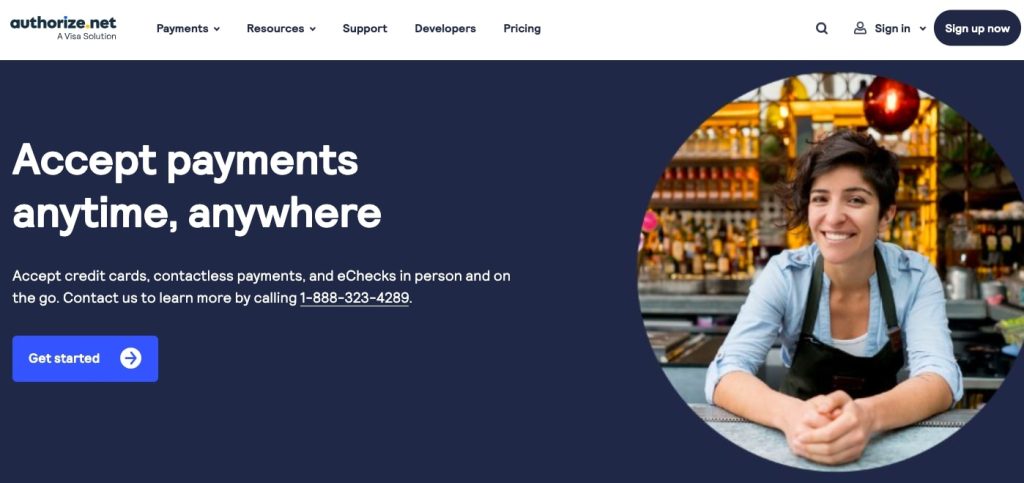
By alphacardprocess April 5, 2024
In today’s digital age, payment gateways have become an essential component for businesses operating in high-risk industries. These industries, such as online gambling, adult entertainment, and pharmaceuticals, face unique challenges when it comes to processing payments. Due to the higher risk of fraud and chargebacks, traditional payment processors are often hesitant to work with these businesses. This is where payment gateway solutions designed specifically for high-risk industries come into play.
Payment gateways act as a bridge between the merchant’s website and the payment processor, securely transmitting customer payment information for authorization and settlement. They provide a layer of protection by encrypting sensitive data and implementing fraud prevention measures. However, not all payment gateways are created equal, and it is crucial for high-risk businesses to choose the right solution that meets their specific needs.
Understanding the Importance of Payment Gateways for High-Risk Businesses
For high-risk businesses, having a reliable and secure payment gateway is of utmost importance. These businesses often deal with higher chargeback rates and fraudulent transactions, making it essential to have robust fraud prevention tools in place. Payment gateways designed for high-risk industries offer features such as real-time fraud screening, 3D Secure authentication, and tokenization to protect against fraudulent activities.
Furthermore, payment gateways provide seamless integration with various e-commerce platforms, allowing high-risk businesses to accept payments from customers around the world. They support multiple currencies and payment methods, including credit cards, e-wallets, and alternative payment options, ensuring a smooth checkout experience for customers.
Comparison of Features: Finding the Right Payment Gateway for Your High-Risk Business
When choosing a payment gateway for a high-risk business, it is crucial to compare the features offered by different providers. Some key features to consider include:
- Fraud Prevention Tools: Look for payment gateways that offer robust fraud prevention tools, such as AI-powered risk scoring, velocity checks, and geolocation filters. These tools help identify and prevent fraudulent transactions, reducing chargeback rates.
- Chargeback Management: High-risk businesses often face a higher number of chargebacks. Choose a payment gateway that provides chargeback management tools, such as dispute resolution and representment services, to help minimize the impact of chargebacks on your business.
- Global Payment Support: Ensure that the payment gateway supports multiple currencies and payment methods, allowing you to cater to customers worldwide. Look for gateways that offer seamless integration with popular e-commerce platforms and support recurring billing for subscription-based businesses.
- API Integration: If you have a custom-built website or require more flexibility in integrating the payment gateway with your existing systems, choose a provider that offers a robust API for seamless integration.
- Reporting and Analytics: Look for payment gateways that provide detailed reporting and analytics tools. These insights can help you track transaction trends, identify potential issues, and optimize your payment processes.
Analyzing Fees: How to Choose a Cost-Effective Payment Gateway for High-Risk Industries
Fees are an important consideration when choosing a payment gateway for a high-risk business. While it is essential to find a cost-effective solution, it is equally important to ensure that the chosen gateway offers the necessary features and security measures. Here are some factors to consider when analyzing fees:
- Setup and Integration Fees: Some payment gateways charge a one-time setup fee or integration fee to get started. Consider these costs when evaluating different providers.
- Transaction Fees: Transaction fees are charged for each successful transaction processed through the gateway. High-risk businesses may face higher transaction fees due to the increased risk associated with their industry. Compare the transaction fees offered by different gateways to find the most cost-effective option.
- Chargeback Fees: Chargebacks can be costly for businesses, as they often incur additional fees. Some payment gateways charge a fee for each chargeback, while others offer chargeback management services as part of their package. Consider the potential impact of chargeback fees on your business when evaluating different providers.
- Monthly Fees: Some payment gateways charge a monthly fee for access to their services. Consider whether the features and benefits offered by the gateway justify the monthly fee.
- Additional Services: Some payment gateways offer additional services, such as fraud prevention tools, dispute resolution services, and recurring billing support, for an additional fee. Evaluate the value of these services for your business and consider whether they are worth the extra cost.
Integration Requirements: Ensuring Seamless Integration with Your High-Risk Business Systems
Seamless integration with your existing business systems is crucial when choosing a payment gateway for a high-risk business. The integration process should be smooth and efficient, allowing you to start accepting payments quickly. Here are some key factors to consider when evaluating integration requirements:
- E-commerce Platform Compatibility: If you are using a popular e-commerce platform, such as Shopify or WooCommerce, ensure that the payment gateway is compatible with your platform. Look for gateways that offer pre-built integrations or plugins for easy setup.
- API Documentation and Support: If you have a custom-built website or require more flexibility in integrating the payment gateway, choose a provider that offers comprehensive API documentation and developer support. This will ensure a smooth integration process and allow you to customize the payment experience to meet your specific requirements.
- Hosted Payment Pages: Some payment gateways offer hosted payment pages, where customers are redirected to a secure payment page hosted by the gateway. This can simplify the integration process, as you only need to redirect customers to the payment page without handling sensitive payment information on your website.
- Mobile Integration: With the increasing popularity of mobile commerce, it is essential to choose a payment gateway that offers seamless integration with mobile apps and responsive payment pages. Ensure that the gateway supports mobile payment methods, such as Apple Pay and Google Pay, to provide a seamless checkout experience for mobile users.
Top Payment Gateways for High-Risk Businesses
Now that we have discussed the importance of payment gateways for high-risk businesses and the factors to consider when choosing a solution, let’s explore some of the top payment gateways suitable for high-risk industries:
Authorize.Net

Authorize.Net is a popular payment gateway that offers robust fraud prevention tools, including Advanced Fraud Detection Suite (AFDS) and Address Verification Service (AVS). It supports multiple currencies and payment methods, making it suitable for global high-risk businesses. Authorize.Net also provides detailed reporting and analytics tools to help businesses track transactions and identify potential issues.
Stripe

Stripe is known for its developer-friendly API and seamless integration with various e-commerce platforms. It offers advanced fraud prevention tools, such as Radar, which uses machine learning algorithms to detect and prevent fraudulent transactions. Stripe supports recurring billing and provides detailed reporting and analytics for businesses to gain insights into their payment processes.
PayPal Payments Pro

PayPal Payments Pro is a comprehensive payment gateway solution that offers robust fraud prevention tools, including risk filters and 3D Secure authentication. It supports multiple currencies and payment methods, allowing businesses to cater to customers worldwide. PayPal Payments Pro also provides chargeback management services, helping businesses minimize the impact of chargebacks.
Braintree

Braintree, a subsidiary of PayPal, offers a secure and scalable payment gateway solution for high-risk businesses. It provides advanced fraud prevention tools, such as Kount, which uses machine learning algorithms to detect and prevent fraudulent activities. Braintree supports multiple currencies and payment methods, including popular digital wallets like Apple Pay and Google Pay.
2Checkout

2Checkout is a global payment gateway that specializes in serving high-risk industries. It offers robust fraud prevention tools, including AVS and CVV verification, to protect against fraudulent transactions. 2Checkout supports multiple currencies and payment methods, making it suitable for businesses operating in different regions. It also provides chargeback management services to help businesses handle disputes effectively.
Exploring the Security Measures Offered by Payment Gateways for High-Risk Industries
Security is a top concern for high-risk businesses, as they often deal with sensitive customer information and face a higher risk of fraud. Payment gateways designed for high-risk industries offer various security measures to protect against fraudulent activities. Here are some common security measures offered by payment gateways:
- Encryption: Payment gateways use encryption technology to secure sensitive customer data during transmission. They employ SSL (Secure Socket Layer) or TLS (Transport Layer Security) protocols to encrypt data, ensuring that it cannot be intercepted or tampered with by unauthorized parties.
- Tokenization: Tokenization is a process where sensitive payment information, such as credit card numbers, is replaced with a unique identifier called a token. The token is used for transaction processing, while the actual payment data is securely stored by the payment gateway. This reduces the risk of data breaches, as the sensitive information is not stored on the merchant’s servers.
- Fraud Prevention Tools: Payment gateways offer various fraud prevention tools, such as AI-powered risk scoring, velocity checks, and geolocation filters, to detect and prevent fraudulent transactions. These tools analyze transaction patterns and behavior to identify potential fraud indicators and flag suspicious activities.
- 3D Secure Authentication: 3D Secure is an additional layer of security that adds an extra step to the checkout process. It requires customers to enter a one-time password or provide other authentication credentials to verify their identity. This helps prevent unauthorized use of credit cards and reduces the risk of chargebacks.
- PCI Compliance: Payment gateways ensure that they are PCI DSS (Payment Card Industry Data Security Standard) compliant, which is a set of security standards established by major credit card companies. Compliance with PCI DSS ensures that the payment gateway follows industry best practices for securing customer data.
Enhancing Customer Experience: User-Friendly Payment Gateways for High-Risk Businesses
While security is paramount for high-risk businesses, it is equally important to provide a seamless and user-friendly payment experience for customers. A complicated or cumbersome checkout process can lead to cart abandonment and lost sales. Here are some features to look for in user-friendly payment gateways:
- Responsive Payment Pages: Payment gateways that offer responsive payment pages ensure that the checkout process is optimized for different devices, including desktops, tablets, and smartphones. This provides a consistent and user-friendly experience across all devices, increasing customer satisfaction.
- Guest Checkout: Offering a guest checkout option allows customers to make a purchase without creating an account. This reduces friction in the checkout process and caters to customers who prefer not to create an account or provide additional information.
- One-Click Payments: One-click payments allow returning customers to make a purchase with a single click, without having to enter their payment information again. This streamlines the checkout process and improves customer convenience, leading to higher conversion rates.
- Multiple Payment Methods: Providing a variety of payment methods, such as credit cards, e-wallets, and alternative payment options, gives customers the flexibility to choose their preferred payment method. This enhances the customer experience and reduces the likelihood of cart abandonment.
- Customizable Payment Pages: Some payment gateways allow businesses to customize the look and feel of their payment pages to match their brand identity. This creates a cohesive and branded checkout experience, instilling trust and confidence in customers.
Case Studies: Successful Implementation of Payment Gateways in High-Risk Industries
To understand the real-world impact of payment gateways in high-risk industries, let’s explore some case studies of successful implementations:
- Online Gambling Industry: A leading online casino implemented a payment gateway with advanced fraud prevention tools and 3D Secure authentication. The gateway helped reduce fraudulent transactions by 50% and chargebacks by 40%. The seamless integration with the casino’s website and support for multiple currencies resulted in a significant increase in customer satisfaction and revenue.
- Adult Entertainment Industry: An adult entertainment website integrated a payment gateway that offered tokenization and PCI compliance. This ensured the security of customer payment information and reduced the risk of data breaches. The user-friendly payment pages and support for multiple payment methods led to a 30% increase in conversions and a decrease in cart abandonment rates.
- Pharmaceutical Industry: An online pharmacy implemented a payment gateway with robust fraud prevention tools and chargeback management services. The gateway helped identify and prevent fraudulent transactions, resulting in a 60% reduction in chargebacks. The seamless integration with the pharmacy’s e-commerce platform and support for recurring billing improved customer retention and revenue.
These case studies highlight the positive impact of choosing the right payment gateway for high-risk industries. By implementing a secure and user-friendly payment solution, businesses can mitigate risks, enhance customer experience, and drive growth.
Future Trends: Innovations and Advancements in Payment Gateways for High-Risk Businesses
As technology continues to evolve, payment gateways for high-risk businesses are also evolving to meet the changing needs of the industry. Here are some future trends and advancements to look out for:
- Artificial Intelligence and Machine Learning: AI and machine learning algorithms are being increasingly used in payment gateways to detect and prevent fraudulent activities. These technologies analyze transaction patterns, customer behavior, and other data points to identify potential fraud indicators in real-time.
- Biometric Authentication: Biometric authentication, such as fingerprint or facial recognition, is gaining popularity as a secure and convenient method of verifying customer identity. Payment gateways are exploring the integration of biometric authentication to enhance security and streamline the checkout process.
- Blockchain Technology: Blockchain technology offers enhanced security and transparency in payment transactions. Payment gateways are exploring the use of blockchain to provide secure and immutable transaction records, reducing the risk of fraud and improving trust between merchants and customers.
- Voice-Activated Payments: With the rise of voice assistants like Amazon Alexa and Google Assistant, voice-activated payments are becoming a reality. Payment gateways are exploring the integration of voice recognition technology to enable seamless and secure payments through voice commands.
- Enhanced Data Analytics: Payment gateways are investing in advanced data analytics tools to provide businesses with deeper insights into their payment processes. These tools analyze transaction data, customer behavior, and other metrics to identify trends, optimize pricing strategies, and improve overall business performance.
Conclusion
In conclusion, payment gateways play a crucial role in enabling high-risk businesses to accept payments securely and efficiently. By understanding the importance of payment gateways, comparing features and fees, and ensuring seamless integration, high-risk businesses can choose the right solution that meets their specific needs. With advancements in security measures, user-friendly features, and future trends, payment gateways for high-risk industries are continuously evolving to provide enhanced security, improved customer experience, and drive business growth.
